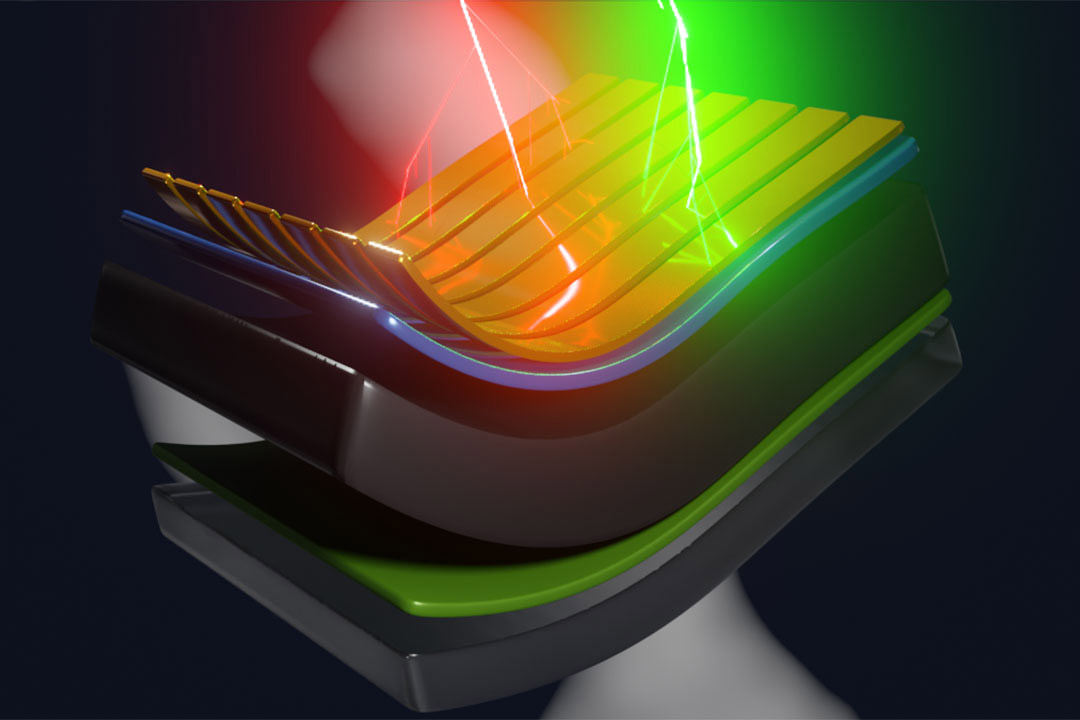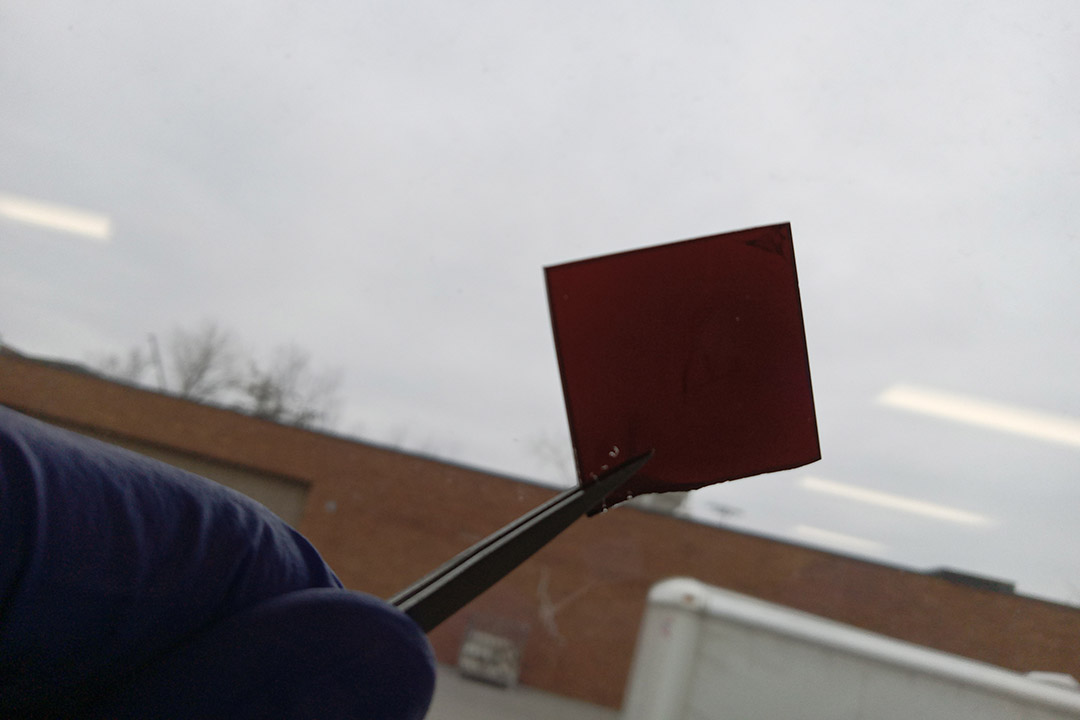RIT professor’s paper on perovskites’ self-healing properties published in ‘Nature Communications’
Assistant professor Ahmad Kirmani’s research focuses on understanding perovskites’ use in space exploration
RIT
RIT researcher Ahmad Kirmani’s recently published paper focuses on the self-healing properties of perovskites, specifically after radiation damage, as shown in this schematic image of radiation beams hitting a perovskite cell.
RIT Assistant Professor Ahmad Kirmani from the School of Chemistry and Materials Science is the lead author on a paper recently published in Nature Communications.
Kirmani’s research is helping to expand and improve space exploration through understanding how the metal-halide perovskite, the next-generation printable semiconductor, reacts to harsh extraterrestrial conditions and self-heals in those conditions.
Perovskite has the ability to be used more widely than traditional hard materials that are currently used in space applications. Organizations such as NASA and the U.S. Air Force have shown interest in the use of perovskite because of its relatively low cost and its tolerance to radiation.
“Typically, people have used hard materials like silicon, III-Vs, and carbides for harsh environments,” said Kirmani, “but soft materials might actually open a window unthought of so far given their tendency to self-heal, as we have demonstrated.”
Tatchen Buh Kum/RIT
Ph.D. student Tatchen Buh Kum shows a perovskite thin film solution-deposited in the Kirmani Lab.
The paper on this research, titled “Unraveling radiation damage and healing mechanisms in halide perovskites using energy-tuned dual irradiation dosing,” also had contributors from the National Renewable Energy Laboratory, University of North Texas, University of North Carolina, Chapel Hill, University of Oklahoma, and the NASA Glenn Research Center. RIT PhD student Tatchen Buh Kum is also a co-author.
With the proliferation and commercialization of the space sector, there is a need for better, cheaper technologies and materials that enable the exploration of planets and environments beyond Earth. Perovskite has a soft, crystalline structure with the ability to repair itself after being damaged, unlike conventional semiconductors such as silicon. Kirmani is trying to further understand how these materials are able to heal themselves at the atomic level.
“We try to recreate space conditions by bombarding these solar cells with radiation,” explained Kirmani. “When the perovskites get damaged, we try to understand and uncover the mechanisms of their self-healing.”
Nature Communications describes itself as an open-access, multidisciplinary journal dedicated to high-quality research in all areas of the biological, health, physical, chemical, Earth, social, mathematical, applied, and engineering sciences.














